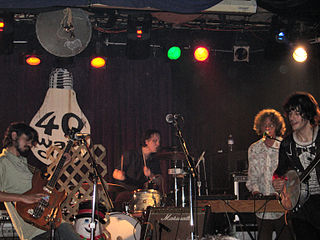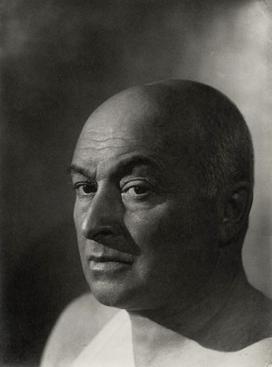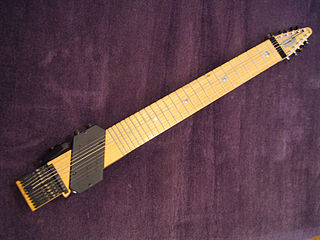
Blackjack is a casino banking game. It is the most widely played casino banking game in the world. It uses decks of 52 cards and descends from a global family of casino banking games known as "twenty-one". This family of card games also includes the European games vingt-et-un and pontoon, and the Russian game Ochko. Blackjack players do not compete against each other. The game is a comparing card game where each player competes against the dealer.

Georges Braque was a major 20th-century French painter, collagist, draughtsman, printmaker and sculptor. His most notable contributions were in his alliance with Fauvism from 1905, and the role he played in the development of Cubism. Braque's work between 1908 and 1912 is closely associated with that of his colleague Pablo Picasso. Their respective Cubist works were indistinguishable for many years, yet the quiet nature of Braque was partially eclipsed by the fame and notoriety of Picasso.

José Victoriano González-Pérez , better known as Juan Gris, was a Spanish painter born in Madrid who lived and worked in France for most of his active period. Closely connected to the innovative artistic genre Cubism, his works are among the movement's most distinctive.

Cubism is an early-20th-century avant-garde art movement begun in Paris that revolutionized painting and the visual arts, and influenced artistic innovations in music, ballet, literature, and architecture. Cubist subjects are analyzed, broken up, and reassembled in an abstract form—instead of depicting objects from a single perspective, the artist depicts the subject from multiple perspectives to represent the subject in a greater context. Cubism has been considered the most influential art movement of the 20th century. The term cubism is broadly associated with a variety of artworks produced in Paris or near Paris (Puteaux) during the 1910s and throughout the 1920s.

The Olivia Tremor Control is an American psychedelic band from Athens, Georgia. The band's main line-up consists of Will Cullen Hart, Bill Doss, Eric Harris, John Fernandes, and Peter Erchick. The Olivia Tremor Control's music combines indie rock and neo-psychedelia, taking influence from psychedelic pop bands of the 1960s, such as the Beach Boys and the Beatles.

Duplicate bridge is a variation of contract bridge where the same set of bridge deals are played by different competitors, and scoring is based on relative performance. In this way, every hand, whether strong or weak, is played in competition with others playing identical cards, and the element of skill is heightened while that of chance is reduced. This stands in contrast to Bridge played without duplication, where each hand is freshly dealt and where scores may be more affected by chance in the short run.

In duplicate bridge, a board is an item of equipment that holds one deal, or one deck of 52 cards distributed in four hands of 13 cards each. The design permits the entire deal of four hands to be passed, carried or stacked securely with the cards hidden from view in four pockets. This is required for in-person duplicate bridge tournaments, where the same deal is played several times and so the composition of each hand must be preserved during and after each play of each deal. When bridge is played online, the functions of the physical boards are replaced by the software.

Louis Marcoussis, formerly Ludwik Kazimierz Wladyslaw Markus or Ludwig Casimir Ladislas Markus, was a Polish-French avant-garde painter active primarily in Paris. Markus studied law in Warsaw before attending the Kraków Academy of Fine Arts, and later moved to Paris to study under Jules Lefebvre at the Académie Julian. His work was first featured in a major exhibition at the Salon d'Automne in 1905. In Paris, he became acquainted with prominent artists of the School of Paris and writers in the cafes of Montmartre and Montparnasse.
These terms are used in contract bridge, using duplicate or rubber scoring. Some of them are also used in whist, bid whist, the obsolete game auction bridge, and other trick-taking games. This glossary supplements the Glossary of card game terms.
In the game of bridge mathematical probabilities play a significant role. Different declarer play strategies lead to success depending on the distribution of opponent's cards. To decide which strategy has highest likelihood of success, the declarer needs to have at least an elementary knowledge of probabilities.

Three Musicians, also known as Musicians with Masks, is a large oil painting created by Spanish artist Pablo Picasso. He painted two versions of Three Musicians. Both versions were completed in the summer of 1921 in Fontainebleau near Paris, France, in the garage of a villa that Picasso was using as his studio. They exemplify the Synthetic Cubist style; the flat planes of color and "intricate puzzle-like composition" giving the appearance of cutout paper with which the style originated. These paintings each colorfully represent three figures wearing masks. The two figures in the center and left are wearing the costumes of Pierrot and Harlequin from the popular Italian theater Commedia dell'arte, and the figure on the right is dressed as a monk. In one version, there also is a dog underneath the table.
The following is a glossary of poker terms used in the card game of poker. It supplements the glossary of card game terms. Besides the terms listed here, there are thousands of common and uncommon poker slang terms. This is not intended to be a formal dictionary; precise usage details and multiple closely related senses are omitted here in favor of concise treatment of the basics.

Experimental luthiers are luthiers who take part in alternative stringed instrument manufacturing or create original string instruments altogether.
Sir Edward Elgar wrote his Violin Sonata in E minor, Op. 82, in 1918, at the same time as he wrote his String Quartet in E minor and his Piano Quintet in A minor. These three chamber music works were all written at "Brinkwells", the country house near Fittleworth in West Sussex that Lady Elgar had acquired for her husband to recuperate and compose in, and they mark his major contribution to the chamber music genre. His Cello Concerto in E minor of 1919 completed the quartet of introspective and melancholy works that comprised Elgar's last major creative spurt before his death in 1934.
Bottle, Glass, Fork is an oil on canvas painting by Pablo Picasso (1881–1973). It was painted in the spring of 1912, at the height of the development of Analytic Cubism. Bottle, Glass, Fork is one of the best representations of the point in Picasso's career when his Cubist painting reached almost full abstraction. The analytic phase of Cubism was an original art movement developed by Picasso and his contemporary Georges Braque (1882–1963) and lasted from 1908-1912. Like Bottle, Glass, Fork, the paintings of this movement are characterized by the limited use of color, and a complex, elegant composition of small, fragmented, tightly interwoven planes within an all-over composition of broader planes. While the figures in Bottle, Glass, Fork can be difficult to discern, the objects do emerge after careful study of the painting. The painting is displayed in the Cleveland Museum of Art.

Woman with a Fan is a painting by the French artist Jean Metzinger. The work was exhibited in 1914 at Moderni Umeni, S.V.U. Mánes, Prague. A 1914 photograph taken at the exhibition in Prague was published in the magazine Zlatá Praha showing Woman with a Fan hanging next to another work by Metzinger known as En Canot , 1913. Donated by Mr and Mrs Sigmund Kunstadter in 1959, Woman with a Fan forms part of the permanent collection in Gallery 391B at the Art Institute of Chicago, US.
Päckchen is a German card game of the patience genre.

Checkerboard and Playing Cards is an early 20th century drawing by Spanish cubist Juan Gris. Done in gouache, graphite, and resin on wove paper, the drawing depicts a table set with a checkerboard and playing cards. Gris' work is in the collection of the Metropolitan Museum of Art, in New York.
William Augustine McCarty-Cooper was an American interior designer based in London and philanthropist.

Pitcher and Violin is an oil-on-canvas painting by the French artist Georges Braque, created in 1909–10. It was made at the beginning of the development of what would be analytical cubism. The painting is held in the Kunstmuseum, in Basel.













